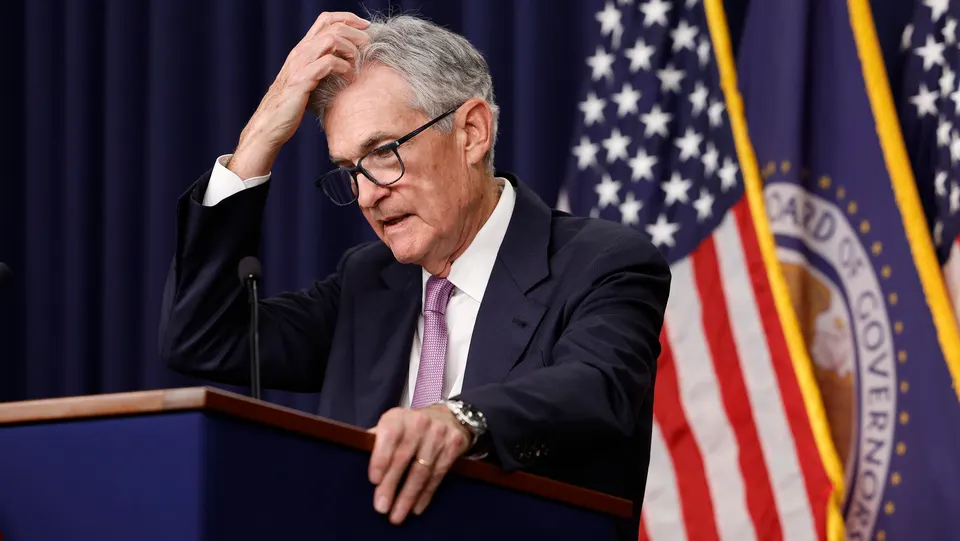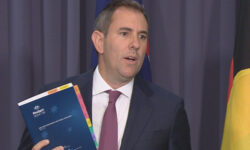
In a significant development in the economic landscape, the United States Federal Reserve has announced its third interest rate cut of the year, signaling a concerted effort to tackle inflation while providing support to the broader economy. This decision, coming amid fluctuating global markets and ongoing concerns over rising costs, reflects the central bank’s strategy to balance economic growth with the critical task of inflation management. The move has captured the attention of financial experts, policymakers, and businesses alike, as it will have far-reaching implications for everything from consumer spending to investment trends.
A Look at the Federal Reserve’s Decision
The Federal Reserve’s decision to lower interest rates for the third time this year comes after months of careful deliberation. The central bank’s primary tool for managing inflation and stimulating economic growth is the adjustment of interest rates. By cutting rates, the Fed is making borrowing more affordable, which can encourage businesses to invest and consumers to spend. However, the decision also comes with a keen focus on inflation, which has been persistently high in recent months, impacting everything from food and fuel prices to housing and healthcare costs.
The latest rate cut brings the federal funds rate down to its lowest level in over a year, offering relief to consumers and businesses alike. This reduction in borrowing costs is expected to ease some of the financial pressures felt by households and companies, ultimately fostering a more conducive environment for economic growth. At the same time, the Federal Reserve is keenly aware of the need to keep inflation in check, and this move reflects a delicate balancing act aimed at addressing the current economic challenges.
Inflation Management: A Key Priority
Inflation has been one of the most pressing issues for the U.S. economy in recent years. Following the pandemic-induced economic slowdown, inflationary pressures surged as supply chains struggled to recover, demand soared, and the cost of goods and services increased. While some inflationary factors were expected in the wake of the pandemic, the speed at which prices have risen has caught many businesses and consumers off guard. For many Americans, everyday items like groceries, gas, and rent have become significantly more expensive, which has led to financial strain for families across the nation.
The Federal Reserve’s interest rate cuts are part of a broader strategy to manage inflation while avoiding an economic slowdown. Lower interest rates are intended to encourage borrowing and spending, which can help stimulate demand in the economy. However, this move also comes with risks, as too much inflationary pressure can lead to an overheated economy, further driving up costs. Therefore, the Federal Reserve’s actions aim to strike a balance between managing inflation and maintaining a steady pace of growth.
Economists and business leaders have closely watched the Fed’s actions, understanding that its policies play a pivotal role in shaping the economic outlook. The recent rate cut, as reported in current business news, suggests that the Federal Reserve is prepared to act decisively if inflation continues to outpace its targets. However, the central bank is also mindful of the risks associated with cutting rates too aggressively. A sudden surge in consumer spending could exacerbate inflation, while too little stimulus could lead to sluggish economic growth.
Impact on Businesses and Consumers
The immediate impact of the Fed’s interest rate cut is likely to be felt by businesses and consumers alike. For consumers, the reduction in interest rates should lower the cost of borrowing, making it cheaper to finance purchases such as homes, cars, and other big-ticket items. This can provide some relief to households that are dealing with rising costs. Additionally, lower borrowing costs may encourage consumers to spend more, which in turn can support businesses that rely on consumer demand.
For businesses, the rate cut is expected to make it easier to access capital, especially for companies looking to invest in growth or refinance existing debt. Small businesses, in particular, could benefit from the lower cost of loans, which may enable them to expand operations or hire more workers. However, businesses also remain cautious as they navigate inflationary pressures. The increased cost of raw materials, labor, and transportation has affected profit margins, and while the rate cut may provide some relief, it does not fully address these supply-side challenges.
The financial markets have reacted positively to the Fed’s decision, with stocks rising in response to the news. Investors are optimistic that the rate cut will help maintain economic stability and promote growth. However, market analysts are also keeping a close eye on future economic indicators, as the Fed’s ability to manage inflation and foster a healthy economic environment remains a critical focus.
Broader Economic Implications
The Fed’s decision to cut interest rates for the third time this year has broader implications for the U.S. economy and beyond. As one of the largest economies in the world, the United States’ economic policies often have a ripple effect on global markets. Lower interest rates can lead to a weakening of the U.S. dollar, which may impact international trade and investment flows. In particular, countries with strong trade ties to the U.S. could see changes in demand for their exports as a result of shifts in currency values.
Moreover, the Fed’s actions are also likely to influence central banks in other countries, particularly in the context of global inflation. If the U.S. is able to manage inflation more effectively through rate cuts, other nations may follow suit in a bid to stimulate their own economies. However, the risk of a global economic slowdown due to inflationary pressures remains a concern for policymakers around the world.
In addition to these global effects, the Fed’s decision also highlights the broader trend of central banks using interest rates as a key tool for managing economic stability. As businesses and consumers adjust to the new rate environment, it will be important to watch for signs of broader economic changes, such as shifts in employment, consumer confidence, and investment patterns.
Looking Ahead: What Comes Next?
The path forward remains uncertain, as inflationary pressures persist in many sectors of the economy. While the Fed’s rate cuts have been successful in stimulating demand and encouraging investment, the central bank’s focus will continue to be on managing inflation. The balance between fostering growth and keeping inflation under control will remain a key challenge in the months and years ahead.
For businesses and consumers, the Federal Reserve’s actions provide both opportunities and challenges. While lower interest rates can help reduce borrowing costs, inflationary pressures remain a concern, and companies will need to adapt to rising costs and supply chain disruptions. Keeping an eye on business insider news and current business trends will be crucial as the U.S. economy navigates the complexities of inflation and economic growth.
Ultimately, the Fed’s decision to cut interest rates for the third time reflects its ongoing efforts to stabilize the economy. As businesses and consumers adjust to this new interest rate environment, the effectiveness of the Fed’s policies will continue to unfold, with implications for the broader economy and global markets.





